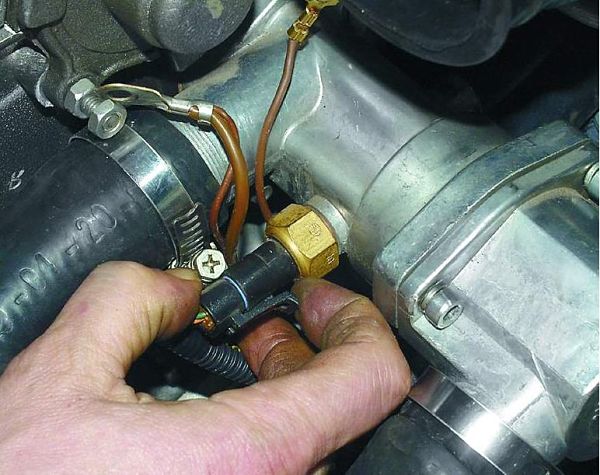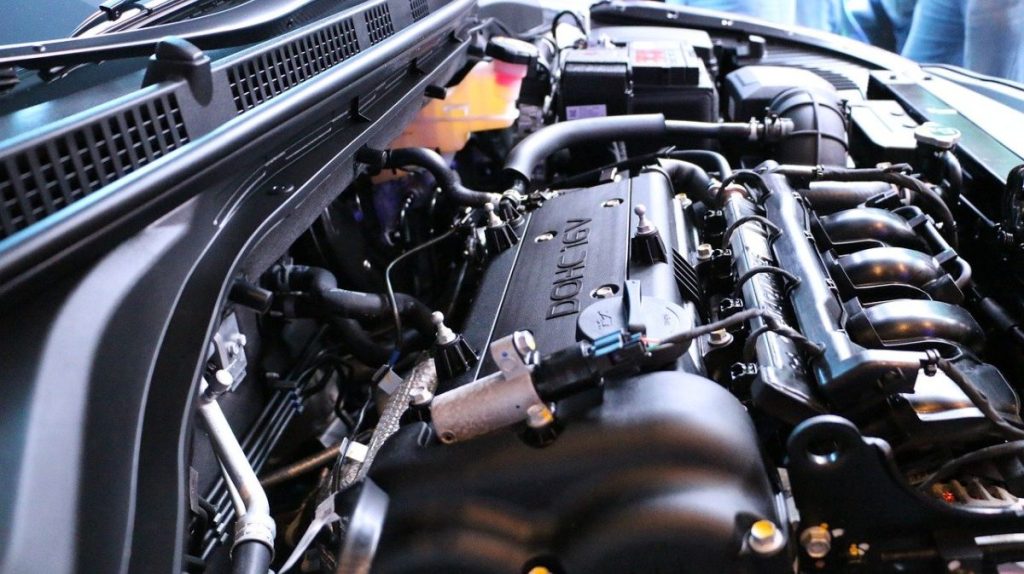
Engine temperature sensor - what you need to know about its proper operation? What are the symptoms of sensor damage?
Content
Engine temperature sensor - how does it get data? Operating principle
The engine temperature sensor is located in the cylinder block, in direct contact with the coolant. It is sometimes referred to as a water or coolant temperature sensor. Its task is to constantly send readings to the computer to transmit specific values. The principle of operation of this element may seem a little complicated at first glance, but we will try to explain it a little.
The operation of the described sensor is based on a negative temperature coefficient. This means that the internal resistance decreases as the heat of the fluid circulating in the cylinder block increases. The situation changes when the temperature of the environment drops. Having received a certain resistance value, the controller loads information adequate to it regarding the temperature of the engine. Each voltage level corresponds to a certain value in degrees Celsius. Thanks to this, the computer “knows” how warm the engine is and how it should adjust the dose of fuel to the current thermal conditions in the unit.
Why measure engine temperature?

Since combustion units mainly need fuel, air and oil for their operation, why do we need to know the amount of heating of the coolant? The answer is very simple: the engine temperature sensor has a direct impact on the quality of the unit, and its heating level also affects other components. Without monitoring the current temperature, the fuel metering controller could constantly enrich the dose, which would lead to an increase in the level of combustion and severe engine overheating.
In addition, too high water or coolant temperatures are detrimental to the engine. It usually runs in the range of 90 to 100.oC. Exceeding this value leads to boiling of the medium, which later (depending on the car model) can even lead to damage to the cylinder head gasket.
Symptoms and reasons for replacing the water temperature sensor

Replacing this element with a new one usually occurs for two reasons:
- he was damaged
- the user wants to exclude it from the list of defective parts.
All this is because the water temperature sensor often gives very ambiguous symptoms. They can be confused, for example, with a damaged flow meter, a dead battery, or a damaged fuel supply system. Just look at the most frequently sent signals in the form of:
- an increase in the number of revolutions at idle,
- increased fuel consumption,
- problem starting the unit.
You acknowledge that these symptoms are not unique to one particular part of the vehicle. Thus, damage to the water temperature sensor is a nuisance and can be misleading, so proper diagnosis takes some time.
Of course, at such a moment you might think that it would be nice to connect a diagnostic computer to the car. Unfortunately, even at this stage, you can see error codes that mean, for example:
- unexplained signal changes,
- short plus,
- wire break,
- sensor short circuit
- the minimum temperature cannot be reached.
A damaged thermostat has similar consequences. Then it is still difficult to determine whether the small water temperature sensor is to blame for the incorrect operation of the engine. However, in some cases it is possible to completely exclude or confirm its damage.
How to check a faulty engine temperature sensor?
However, sometimes everything indicates that this sensor has failed in the engine. First of all, take a good look around. Check connections, condition of insulation, wires, possible kinks, disconnect it from the plug and look for signs of corrosion. It may turn out that the engine temperature sensor is not damaged at all, but was filled with liquid or another factor, and its contacts should be cleaned.
If all of the above procedures do not bring the expected result, you should be prepared to replace the entire element. How to do it?
Replacing the coolant temperature sensor

First of all, you will need a new sensor. The correct amount of coolant will also be useful, because replacing this element is always associated with a loss of coolant. The water temperature sensor is best replaced on a cold engine. There is no risk of burns from the components of the unit or the liquid that will necessarily leak out.
Next, remove the damaged item. Start by unplugging the cord from the plug. Carefully unscrew the sensor using the wrench provided for this purpose. Screw in the new element in the same place and only then fill the engine with the appropriate amount of new fluid. Don't forget to ventilate properly.
All you need is a few wrenches, some new fluid, and some common sense. Thanks to the tips above, you will definitely be able to replace the sensor. Good luck!
